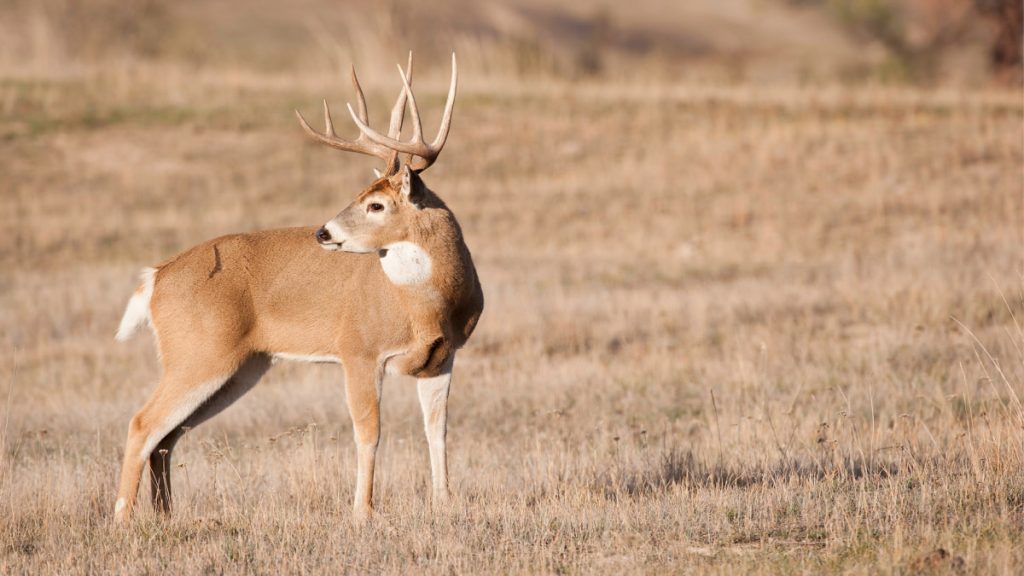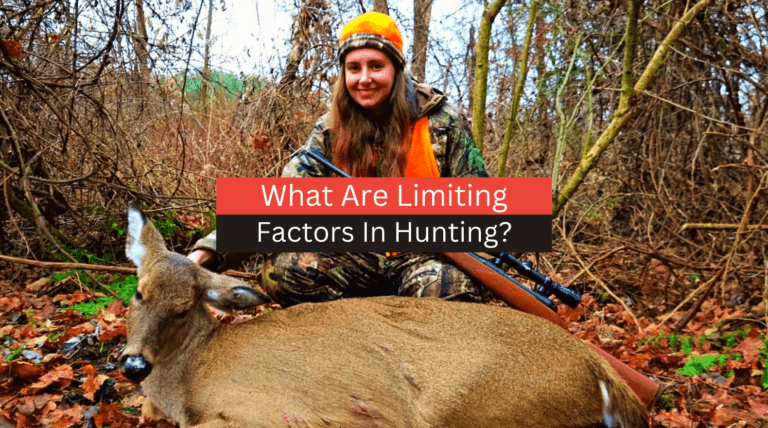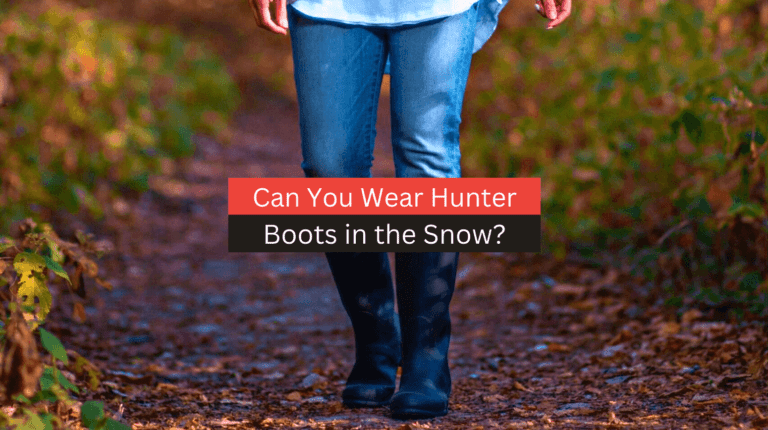As a passionate deer hunter, you know that weather conditions can greatly affect the outcome of your hunting trip. One of the most significant weather factors is wind, which can either aid or hinder your chances of success.
While a moderate breeze can help to disperse your scent and mask your movements, too much wind can be detrimental to your hunting efforts. But just how much wind is too much for deer hunting?
Generally, wind speeds higher than 15 mph can impact deer movement, and speeds exceeding 30 mph can put a stop to all deer activities. As a result, hunters should keep an eye on the wind speed before heading out to hunt and adjust their approach accordingly.
In this article, we will explore the impact of wind on deer hunting and provide you with some guidelines on when it’s best to stay indoors and wait for better conditions.
What Factors to Consider When Hunting In Windy Conditions?
1. Deer Movement
Deer movement is a crucial factor to consider when hunting in windy conditions.
Strong winds of over 15 mph can significantly impact deer behavior, causing them to alter their regular movement patterns. In such conditions, deer tend to hide during the daytime and become more active at night. Bucks, in particular, rely less on their sense of smell and use their sight to search for suitable shelters.
As a result, hunters must adapt their approach and plan accordingly. They can use specialized hunting gear, such as rifle-mounted rangefinders with camouflaging, to increase their chances of success. Additionally, they must be aware of the change in deer travel schedules and adjust their hunting strategies accordingly.
Understanding deer movement in windy conditions is vital for any hunter seeking to bag a big buck.
2. Deer Smelling Sense
Deer have an extraordinary sense of smell that is crucial for their survival in the wild. Their ability to detect even the slightest scent is impressive, and it plays a significant role in their ability to avoid predators, including hunters. However, when it comes to hunting in windy weather, the deer’s sense of smell may not be as effective as usual.
When a strong wind blows, it carries scents in different directions, making it harder for the deer to pinpoint the source of a particular scent. As a result, hunters can use this to their advantage by positioning themselves in areas where the wind is blowing in their direction, making it harder for the deer to detect their presence.
However, it is important to note that deer can still pick up on scents even in windy weather, so hunters should take necessary precautions to minimize their scent by using scent blockers, wearing appropriate hunting clothing, and staying downwind when approaching their prey.
By understanding how a deer’s sense of smell works, hunters can improve their chances of a successful hunt, even in windy weather.
3. Deer Bedding Activities
Deer are very sensitive to their environment, particularly when it comes to their sense of smell. In windy weather, their behavior and movement patterns may change to adapt to the challenges presented by the wind. Bucks, in particular, tend to alter their bedding activities when the wind speed exceeds moderate levels of 15 mph.
To feel safe, deers will bed down in areas where the wind hits their backs, so they can detect any scents approaching from the front. They also tend to seek out areas with thick bushes or heavy green masses to protect them from the wind and predators. This allows them to conserve energy while still remaining alert to potential threats.
As a hunter, understanding these deer bedding activities is crucial for success when hunting in windy weather. By focusing on areas where deer feel safe and secure, you increase your chances of spotting and successfully hunting your prey.
Remember to stay downwind of your target and use the wind to your advantage. With the right knowledge and strategies, hunting in windy weather can be a rewarding and exciting experience.
4. Bullet Or Arrow Trajectory
When hunting in windy weather, understanding the impact of wind on bullet or arrow trajectory is crucial. At shorter distances, wind can still have a significant impact on your shot placement, so it’s important to aim accordingly.
For bow hunting, using a bow with a greater draw weight and maintaining a shorter distance between you and your target can help minimize the deflection of the arrow.
A bow hunting rangefinder can also be a helpful tool for accurate ranging without disturbing the animal. Similarly, understanding the trajectory of your bullet and compensating for wind drift can help prevent missed shots and increase your chances of a successful hunt.
Taking the time to practice and familiarize yourself with your equipment in windy conditions can also make a significant difference in your accuracy and success as a hunter.

How Does Wind Affect Deer Movement?
Research from Penn State University suggests that wind affects deer movement differently based on its intensity. In calm winds under one mph, deer move less frequently. In moderate winds ranging from 1-15mph, deer movements increase, and the more winds recorded, the more movement is recorded. However, in strong winds between 16-30mph, deer move even more frequently.
The study found that this effect varies between sexes; does move less frequently and over shorter distances than bucks. Hunting during high winds of over 30mph is not recommended as it could create complications for bowhunters such as discomfort, difficulty in movement, and the risk of damage to hunting gear.
Additionally, arrows could be blown off course, making it difficult to accurately target the deer. Therefore, hunters should avoid hunting during high winds to ensure safety and accuracy.
Overall, wind can have a significant impact on deer movement, and hunters should pay attention to wind speeds and their effects on deer to improve their hunting success.
Why Does the Wind Affect Deer?
Deer are known to move more frequently in higher winds, and scientists are still trying to understand the reason behind this behavior. One theory is that the wind may make it more difficult for deer to detect potential threats, such as predators, due to the disruption of sounds and scents. This could cause deer to feel more vulnerable, leading them to move more often in an effort to stay safe.
Another theory suggests that high winds may be a signal of an approaching weather event, such as a cold front. Deer are known to be more active before a cold front arrives, as they prepare to seek shelter and gather food. In this case, the wind could be acting as a warning signal for the deer, indicating that they need to prepare for an impending weather event.
This could lead to increased activity and movement as the deer try to secure resources and find shelter.
How Does Wind Affect Bowhunting?
When it comes to bowhunting, wind can have a significant impact on the accuracy of your shot. To mitigate this, hunters should aim to get as close as possible to their target before taking a shot, as the less distance your arrow has to travel, the less chance it has of being blown off course.
Practicing in high winds is also crucial, as it allows you to adjust your aim and learn how to compensate for wind resistance. Investing in quality hunting goggles or glasses is also a wise decision, especially in rainy or windy conditions, to protect your eyes from debris while aiming.
The most important tip, however, is to use a bow with the highest draw weight that you can manage, as this will increase the force behind your arrow and help it travel faster.
Additionally, using a heavier arrow can also increase velocity and require a higher amount of force to change its trajectory. By employing these strategies, bowhunters can increase their chances of a successful and accurate shot.
Conclusion
In conclusion, during whitetail hunting season, high winds may be seen as a blessing by hunters. Despite popular belief, studies have shown that moderate winds can actually increase whitetail movement.
To take advantage of this, hunters should look for windy conditions with winds below 20mph, and prepare themselves with the necessary equipment such as a bow with high draw weight, odor neutralizers, and heavier arrows.
By being well-prepared and taking advantage of windy conditions, hunters can increase their chances of a successful bow hunt.
FAQs
What wind speed is best for deer hunting?
According to a study, the best wind speed for deer hunting is in the range of 0 to 4 mph, which is characterized as light winds. Deer tend to move the most during this wind speed range. As wind speeds increase, deer movement dramatically declines when wind speeds reach 15 to 19 mph.
Therefore, it is recommended that deer hunters consider wind speed and choose a hunting time when the wind is light to increase their chances of deer hunting success.
What winds do deer move most?
Deer move most in light winds, according to local weather information monitored by researchers. Their movements decrease significantly when wind speeds reach 15 to 19 mph, but increase again when wind speeds exceed 20 mph.
What wind is best for deer hunting?
When it comes to deer hunting, the best wind direction is generally a light and steady breeze blowing in your face. This allows you to approach your hunting location without alerting the deer to your scent. A steady crosswind can also work, as long as it is consistent and not too strong.
Avoid hunting with a tailwind, which will carry your scent toward the deer and make it much harder to get a good shot.
How much wind is too much for bow hunting?
The maximum wind speed for bow hunting varies depending on a number of factors, including the type of bow being used and the experience level of the hunter. In general, however, wind speeds above 20 mph can make bow hunting difficult and may cause arrows to fly off course.
It is important for hunters to assess their own skills and equipment and make decisions about hunting in high winds accordingly.
Is 10 mph wind bad for deer hunting?
The impact of winds on deer hunting may vary depending on their strength. Hunters should be aware of how wind speed affects a deer’s behavior. When the wind isn’t too strong, deer may not move much in response to it. When the wind is stronger, however, deer may move to more protected areas to lessen the effects of the wind. Therefore, it is not a matter of good or bad but rather how it affects deer behavior.
Do deer move more as winds increase?
Deer seem to move a lot more in the wind according to the research. It can be a good time to get in the woods on windy days.

I am Sam Billings, an entrepreneur who runs a printing business. In my free time, I enjoy the thrill of the hunt and often spend hours pursuing game. I am passionate about hunting gear and equipment, and I take great pleasure in helping fellow hunters find the right gear for their needs. From rifles and scopes to clothing and accessories, I am always happy to share my knowledge and expertise.






